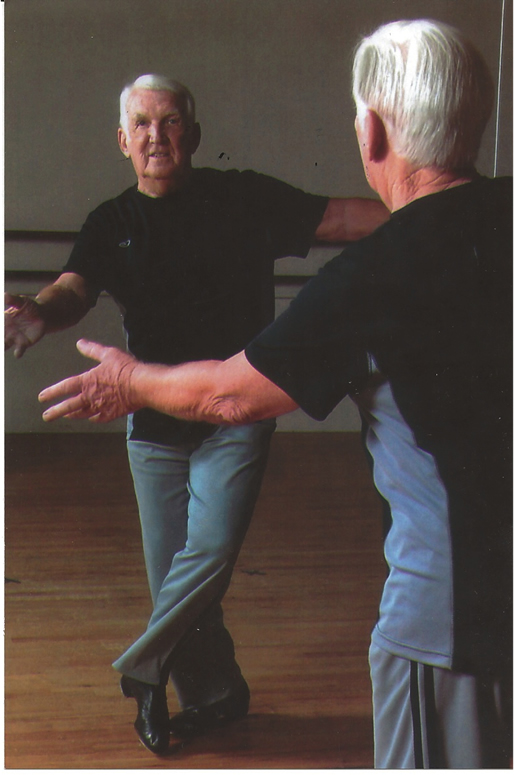Diana Baffa-Brill

What inspired you to become a dancer?
“The Red Shoes.” My mom took me to see the movie when I was just five years old, and after seeing it, I said “I want to be a dancer when I grow up and want to go to dancing school.” To me, ballet is the epitome of everything that’s beautiful. I remember when I first saw A Chorus Line and heard the sung lyrics “everything was beautiful at the ballet,” I burst into tears. It’s how I felt when I was a little girl. Mom enrolled me at a local dance school (Mineola,Long Island) and I was on my way.
When I was 11years old, I won a local dance competition that was called “Stairway to Stardom.” I thought some of the others were much better dancers than I and found out they studied “in the city.” A couple of years later while I was attending the High School of Performing Arts and studying dance with Bella Malinka and Madame Tovolga, I started taking classes at the June Taylor School with teachers like Luigi, Tom Mathis and Karel Shook. June Taylor hired me to be one of the June Taylor Dancers when I was just 15 years old. We danced on TV and were regulars on The Jackie Gleason Show. I danced with the group until I turned 18, auditioned for and got my first Broadway Show (Thirteen Daughters-choreographed by Rod Alexander) and soon after, Bob De Voye and Fred Favorite asked me to be their partner in their act called The Bob De Voye Trio. I spent several years touring all over the world with them.
Who was the most influential person in your career?
Bob and Fred. Both had been soloists with ballet companies and they were like my chaperones and teachers as well. We did TV, international concerts, and played the top nightclubs around the country. The act was 15 minutes long and I was fearless as they tossed me from one to the other while doing really difficult lifts. They were strict disciplinarians and taught me about my responsibility as a dancer and also about the artistry of show business.
What teacher or teachers had the most influence on your career?
Karel Shook (the first teacher & ballet master of the Dutch National Ballet and co-founder with Arthur Mitchell of the Dance Theatre of Harlem) who taught at the June Taylor School. He was my all time favorite. He encouraged me and pulled things out of me like how to master pirouettes that enabled me to go on and on and on. He made me think that I could do anything, you know, just encouraged me and would always put me in the advanced classes. He was funny, gentle, very knowledgeable, gave me a strong technique and most of all, taught me the joy of dancing.
What was your most memorable dance experience?
We (The Bob De Voye Trio) were in Buenos Aires doing a concert with a lot of tango dancers and it was November 22, 1963. I was so devastated by the news of President Kennedy’s assassination that I didn’t want to go on. We felt like we were 5000 miles away from the USA and there we were (no cell phones at the time). We went to the American Embassy and spent the afternoon there. It was a very emotional experience. That evening we went to the theater and everyone was so kind. The producers said we didn’t have to go on if we didn’t want to. In the tradition of “the show must go on” we did. Another memorable experience was the out of town try-out opening night of “Mame” in Philadelphia. When Angela made her entrance at the top of the staircase, a deafining roar came from the audience. We couldn’t start the show and at that moment I knew I was in what they call a “Broadway Hit.”
Do you have a most frightening moment in your dance career?
When we were in Argentina all of the theaters we danced in had raked stages. Bob and Fred threw me around and we had to adjust to each stage. I was always a fearless dancer but those raked stages were really scary. When I was in the Broadway production of Richard Rogers and Stephen Sondheim’s “Do I Hear A Waltz?” I had to do a slow Grand Ronde de Jambe en l’air downstage at the edge of the stage with a blinding spotlight in my face. It was a slow count of six or seven and I had to hold it with no place to feel my balance. Needless to say, every night before I went on, I was terrified of losing my balance.
What experience or Legacy would you like to pass on to the next generation?
If you have the talent, you have to build up a resume. So, if it means going on tour for a year, you do it. If it means working with a few different choreographers doing whatever, even if it’s not exactly what you want to do, you do it. It’s not going to be handed to you on a silver platter. It was easier to work back in my generation. I mean, we had weekly TV shows that we could do, we had Broadway, summer stock, dinner theaters. You have to approach your career like it’s a job and also be aggressive about getting your resume out there. Going on “go sees,” seeing agents, managers. That’s as important as when you finally land a job and have to do the work. I really believe very strongly that in today’s art world it is important to have something else you can do when things are slow. I’m a massage therapist. Learning massage therapy was the smartest thing I ever did. You can keep your career and always come back to it. A perfect job for someone in the arts. I also volunteer as a docent at the New York Historical Society. Dancers usually always have interesting hobbies and outside interests, and history has always been mine. Follow your dream and enjoy doing what makes you happy.
When did you decide to become a choreographer?
I never dreamed of becoming a choreographer. While attending Columbia University, I was also the dance captain of Mame on Broadway and doing eight shows a week I thought I wanted to become an anthropologist specializing in African dance I was going to be a real intellectual! One day after school, the phone rang and it was Onna White telling me that she needed me to re-stage the national company of Mame with Elaine Stritch and Janet Blair. I was in my third year of college and they were planning on sending me to the Congo to do my African Dance research the following year. I told Onna about this and she said we need you, we don’t have anyone else that knows the show like you do. You can always go back to school. So, I said “yes”. After that, one job led to another and now I was Diana Baffa, Choreographer. I have never regretted that decision.
What, when and where was your first job as a choreographer?
It was a production of “Oliver” at the Atlanta Theater Under The Stars starring Vincent Price. From there I went to the Casa Manana Theatre in Fort Worth and choreographer there for two seasons.
How did you or how does one make the connection to get hired as a choreographer?
It’s difficult. If you’re in college, choreograph everything that you can. Take videos of it and get it out there. With all of the technologies in place today you can put it on YouTube, on your Facebook page or wherever you think that people can easily view the work. But college or no college, keep experimenting, learning and choreographing, choreographing, choreographing. Get dancers interested in wanting to work with you and don’t forget the joy of dancing.
|
|
Skip Randall

What inspired you to become a dancer?
When I was about seven, my mother took me to the doctor who said “Why don’t you get Skip to take some ballet classes to build him up?” After about six months I decided to take tap and my life changed forever. When I was twelve, my father took me to study with Ernest Carlos.
Who was the most influential person in your career?
Ernest Carlos was number one. He was a terrific teacher, not so much with technique, but his sense of style and all those routines were great. He had a cigarette hanging out his mouth, warming us up with routines and then he’d lean on the ballet barre, close his eyes and work something out…walk to the center of the floor and do a step for us to pick up. Shelia Bond and I took class together. She was a great tapper! Paul Draper was a huge influence as well. He was more of a great dancer than teacher, and only used musical terms in class. He was rough on his pianists. Paul would say, “Give me something 17th century” Baroque, but not rococo; 5/4 time, using quarter note triplets. He would routinely throw students out of class if he didn’t think they were serious enough. Dance was like a religion to him.
What was the nmost memorable moment in your career?
I think that feeling of standing on a stage before the curtain goes up on opening night of a Broadway Show, and hearing the orchestra warming up. I felt honored to be there with MAKE MINE MANHATTAN, LET FREEDOM SING, BY JUPITER. After the army, I opened in CALL ME MISTER, where I understudied Bob Fosse and got the chance to go on. 1950 I gave up performing and taught for Ernest Carlos. I did that for 5 or 6 years and then opened my own studio.
What was the most frightening moment?
Touring with Bill Evans where we encountered a blinding snow storm. I got the flu and felt that I would die I was so sick. I wrote a note in my dressing room before going on stage which said, “If I die, just ship my body back home to such and such an address.”
What do you think your legacy to the nexet generation of dancers might be?
If you pass it on, the history, it lives. Today they have so many ways of recording what’s happening in dance with cameras, phones and tablets etc. But back then, we didn’t have the equipment. Some of the questions I’m asked today are; Did you really dance for Bill Robinson as a kid? Did you really study with Paul Draper? Did you really see John Bubbles play Sportin’ Life in PORGY AND BESS? Can you break down the Condos Brother’s ten sound double wing? Paul Draper used to perform a five sound wing on one foot and nerve taps on the other, both at the same time! How do you use a stop watch to count how many tap sounds you can do per second? I used to do fourteen, but that was years ago.
What do you think of Broadway and theater dance today? How has it changed?
Too many gimmicks and tricks…not enough style. Technique is good, but lacking in artistry. You have to know how to dance first, then tap. I was involved here in New Mexico with Bill Evan’s New Mexico Tap Dance Jam. He started it at the University of New Mexico in 1998 and I performed in them for over ten years, then I retired.
|



